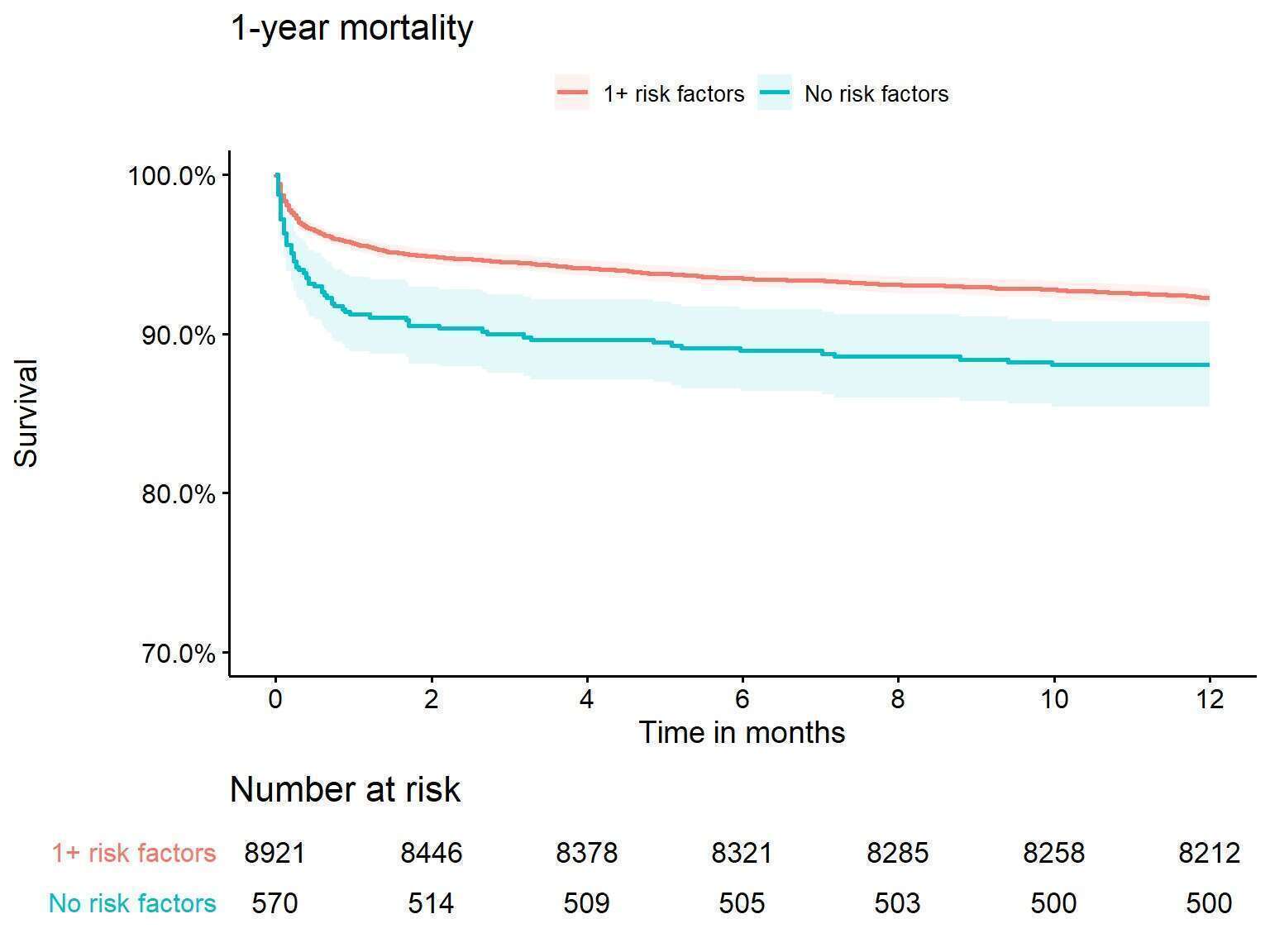
Worse Outcomes of ACS Patients Without Versus With Traditional Cardiovascular Risk Factors
2Cardiology, Sheba Medical Center, Faculty of Medicine, Tel-Aviv University, Israel
Introduction: Approximately 5-15% patients presenting with acute coronary syndrome (ACS) have no traditional cardiovascular risk factors (RFs).
Objectives: To evaluate the management, outcomes and time dependent changes of ACS patients without RFs.
Methods: Evaluation of clinical characteristics, management strategies, and outcomes as well as time dependent changes (by 3 time periods: early [2000-2006], mid [2008-2013], and late [2016-2018]) of ACS patients without RFs (diabetes mellitus, hypertension, dyslipidemia, family history of IHD and current or past smoking) or known coronary artery disease, enrolled in the biennial ACS Israeli Surveys (ACSIS). We compared ACS patients without RFs (RF-) to those ≥1 RFs (RF+).
Results: Overall 583/10,324 (5.6%) eligible ACS patients were RF- (median age 64 [IQR 52-77], 25% females]. The RF- group were older, more educated, with lower BMI and prevalence of another cardiovascular comorbidity and chronic kidney disease compared with the RF+ group. The in-hospital PCI rates were lower among the RF- vs. the RF+ group (55% vs. 66%, respectively p<0.001). The rate of in-hospital complications was greater in the RF- vs. RF+ group (31.4% vs. 26.1%, respectively p=0.006). The rates of 30-day MACE were significantly higher among patients with RF- vs. RF+ (18.1% vs.12.8%, respectively p<0.001). Similarly, the rates of 30-day and 1-year all-cause mortality (figure 1) were higher among patients with RF- vs. RF+ (8.7% vs. 4.2%, p<0.001 and 11.9% vs. 7.7% p<0.001 respectively). A trend of decline in the rate of MACE was observed between the early and the late study period in the RF- group (22% vs. 10.7% p=0.002 respectively
Conclusions: ACS patients without traditional cardiovascular risk factors comprise a unique group with reduced prevalence of comorbidities yet significantly worse short-and long-term outcomes. Additional research to identify unique risk factors and targets for interventions to improve outcomes of this group of patients is warranted.

Powered by Eventact EMS